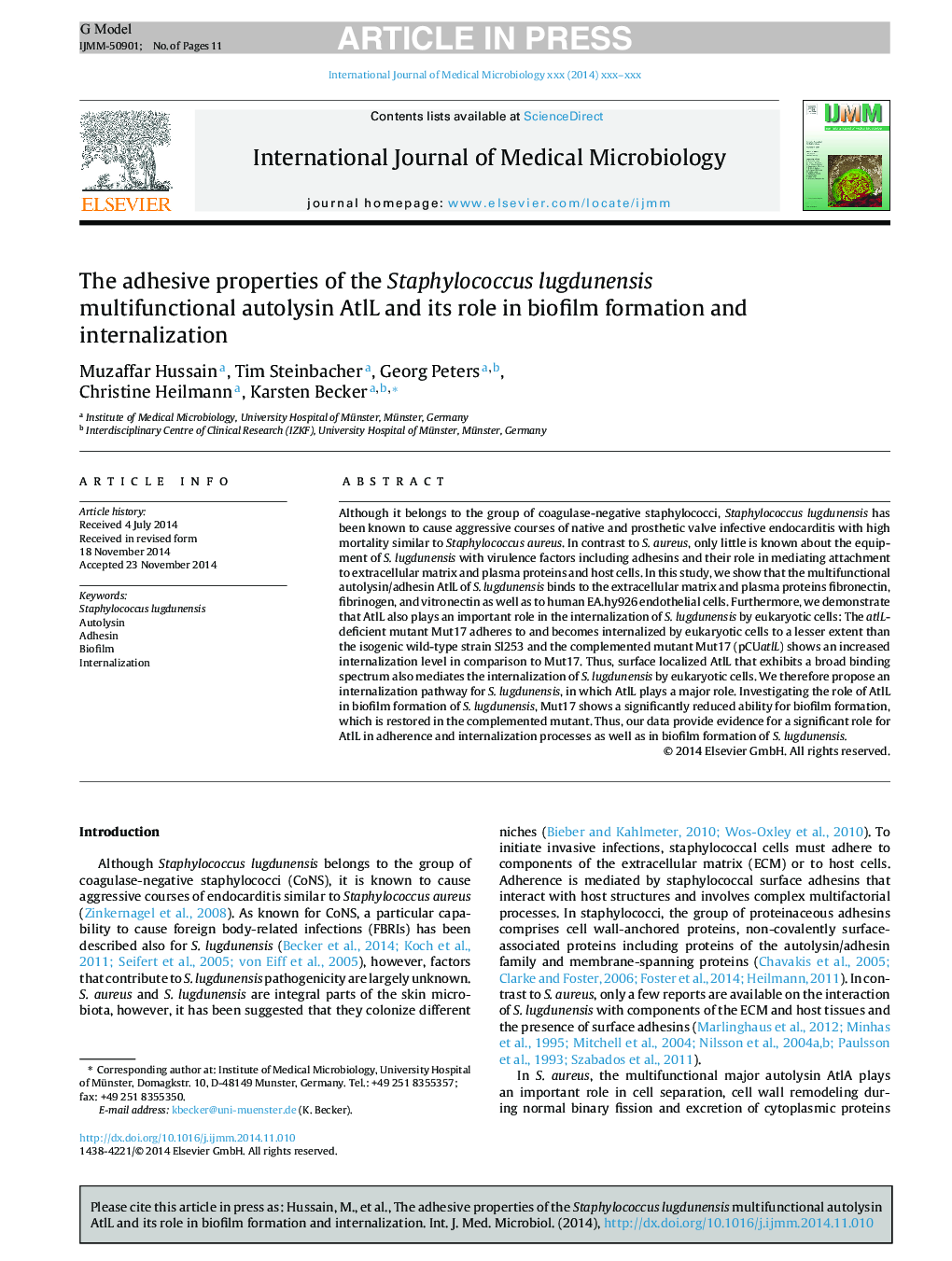| Article ID | Journal | Published Year | Pages | File Type |
|---|---|---|---|---|
| 8385367 | International Journal of Medical Microbiology | 2015 | 11 Pages |
Abstract
Although it belongs to the group of coagulase-negative staphylococci, Staphylococcus lugdunensis has been known to cause aggressive courses of native and prosthetic valve infective endocarditis with high mortality similar to Staphylococcus aureus. In contrast to S. aureus, only little is known about the equipment of S. lugdunensis with virulence factors including adhesins and their role in mediating attachment to extracellular matrix and plasma proteins and host cells. In this study, we show that the multifunctional autolysin/adhesin AtlL of S. lugdunensis binds to the extracellular matrix and plasma proteins fibronectin, fibrinogen, and vitronectin as well as to human EA.hy926 endothelial cells. Furthermore, we demonstrate that AtlL also plays an important role in the internalization of S. lugdunensis by eukaryotic cells: The atlL-deficient mutant Mut17 adheres to and becomes internalized by eukaryotic cells to a lesser extent than the isogenic wild-type strain Sl253 and the complemented mutant Mut17 (pCUatlL) shows an increased internalization level in comparison to Mut17. Thus, surface localized AtlL that exhibits a broad binding spectrum also mediates the internalization of S. lugdunensis by eukaryotic cells. We therefore propose an internalization pathway for S. lugdunensis, in which AtlL plays a major role. Investigating the role of AtlL in biofilm formation of S. lugdunensis, Mut17 shows a significantly reduced ability for biofilm formation, which is restored in the complemented mutant. Thus, our data provide evidence for a significant role for AtlL in adherence and internalization processes as well as in biofilm formation of S. lugdunensis.
Related Topics
Life Sciences
Biochemistry, Genetics and Molecular Biology
Biochemistry, Genetics and Molecular Biology (General)
Authors
Muzaffar Hussain, Tim Steinbacher, Georg Peters, Christine Heilmann, Karsten Becker,
